Three Things: The Passing Glance Edition

I believe it’s about time for another imaginary word from The Dictionary of Obscure Sorrows:
xeno
n. the smallest measurable unit of human connection, typically exchanged between passing strangers–a flirtatious glance, a sympathetic nod, a shared laugh about some odd coincidence–moments that are fleeting and random but still contain powerful emotional nutrients that can alleviate the symptoms of feeling alone.
I think everyone has experienced at least one moment of xeno at some point in their lives: the little wave of thanks a pedestrian gives when a car has stopped to let them cross the street, that fleeting moment of shared eye-rolling when the bellowing subway hawker goes off the rails, the jolt of electricity when one meet the eyes of an attractive stranger in a crowd. Let’s write about it, yes?
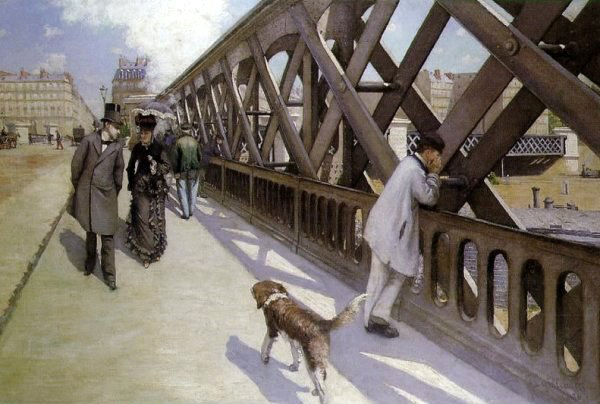
Gustave Caillebotte, Le Pont de l’Europe, 1876. Oil on canvas. Musée du Petit Palais, Geneva.

Edgar Bundy, The Passing Glance, 1892. Oil on canvas.
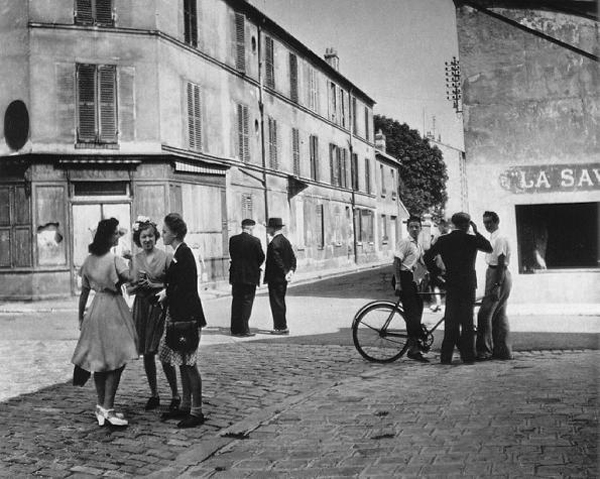
Robert Doisneau, Sunday Morning in Arcueil, 1945. Photograph.
Three Things: The Edition from Above

The house that Wren and I grew up in has a balconied loft overlooking the kitchen below. When we were young, we’d spy on people from above, lying on our stomachs and peering over the edge, our foreheads pressed into the just-too-small gaps between railing slats. As long as we didn’t betray our presence with a giggle, we could secretly watch our mother wash vegetables from the garden, our father walk in the back door from outside, or study the unfamiliar head-tops of guests as they told stories and laughed loudly.
Looking out the window of a multi-storied building, peering over the balcony in a theater, sitting atop a ferris wheel (my apologies to those of you who are afraid of heights): one doesn’t have to be a climbing creeper to find oneself above other people’s heads. Perhaps it’s just me, but I find something fascinating about watching people from above. Often you can’t see their faces, so it feels less like you’re spying into someone’s private life, and more like you’re simply an audience member watching a scene in a play, perhaps, or an anthropologist studying mannerisms and social interactions. As removed as you are from the action itself, you’re free to weave your own backstories for the characters below you.
This week, let’s write something from a high perspective, shall we? Below, I have three high vantage points (complete with head-tops, of course) for inspiration.
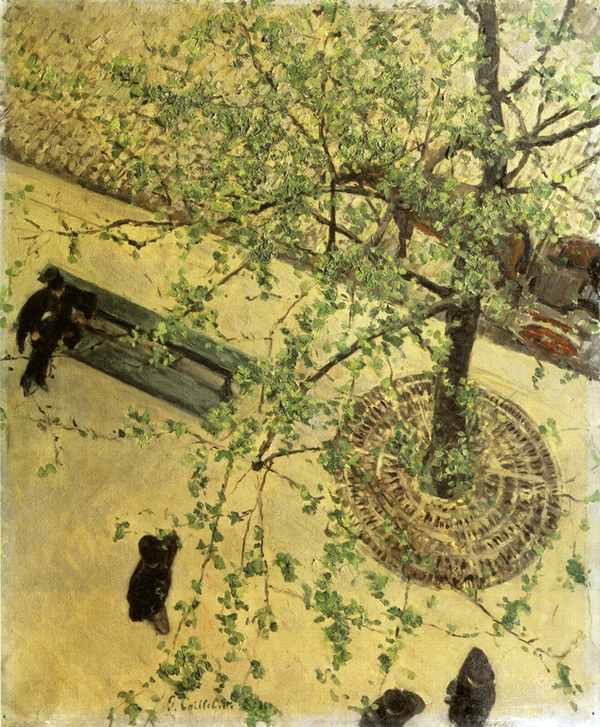
Gustave Caillebotte, Boulevard Seen from Above, 1880. Oil on canvas. Private collection.
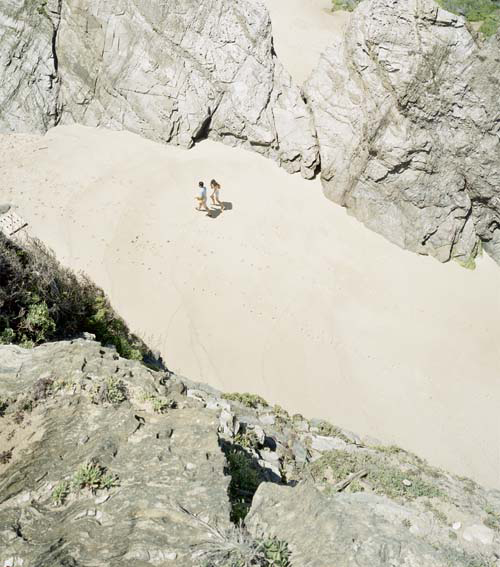
Christian Chaize, Praia Piquinia et demi 5 06/2006 from To Praia Grande, 2006. Photograph. www.christianchaize.com
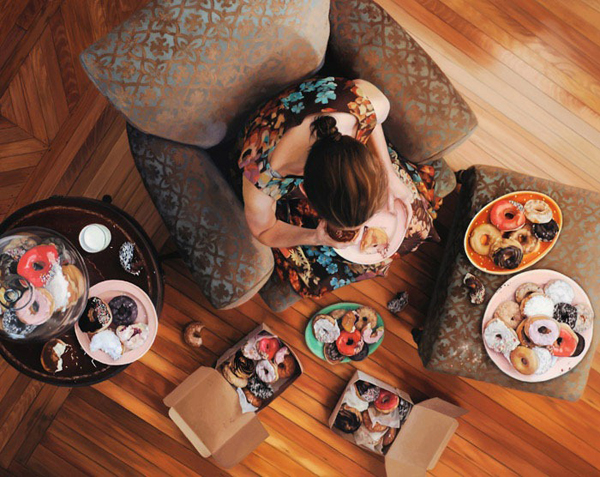
Lee Price, Sunday, 2008. Oil on linen. www.leepricestudio.com





